The complete beginner's guide to wild camping
In its simplest form, wild camping is sleeping outdoors in a tent or bivy away from busy campsites and as far as possible from roads or buildings.
It’s all about getting away from the stresses of the daily grind for a night or two and exploring the vast, beautiful wilderness that still exists in the UK.
A family camping trip can involve the sort of planning normally reserved for invading a small country. You might have a trailer packed to the brim with camping gear: a tent, sleeping mats and sleeping bags, tables, chairs, cooking gear, storage furniture and lighting. You name it, it’s in there.
Then you pack the boot and roof box with holdalls, bikes, coolboxes, food, etc. By the time the car is packed half the day is gone, and you’ve still got to unpack at the other end. We're all in favour of taking as much equipment as possible to make camping as comfortable as possible for all the family.
But at its heart, camping is supposed to be about simplicity and getting closer to nature. That’s what wild camping offers, and in these unsettling times, that’s never been more important.
Is wild camping legal?
You've probably heard that wild camping is illegal everywhere in the UK apart from Scotland. This is not quite true. Outside of Scotland there is no legal right to camp wild in the UK but that doesn’t mean that wild camping is ‘illegal’.
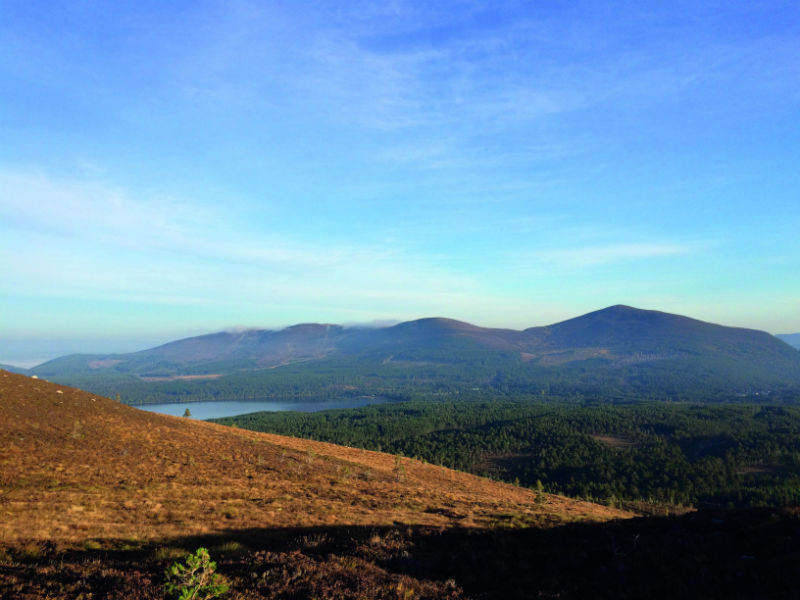 In most of the UK you can set up camp with the permission of landowners to camp on their land. And in many hilly areas, such as the Lake District, responsible wild camping away from roads and cultivated land is tolerated. You can also enjoy lightweight camping legally on Dartmoor for up to two nights on most of the unenclosed common land.
In most of the UK you can set up camp with the permission of landowners to camp on their land. And in many hilly areas, such as the Lake District, responsible wild camping away from roads and cultivated land is tolerated. You can also enjoy lightweight camping legally on Dartmoor for up to two nights on most of the unenclosed common land.
The situation in Scotland is very different as there is a legal right to camp almost anywhere, constrained by some guidelines based on common sense, consideration and best environmental practice. Permits are required to camp in some areas around Loch Lomond - check with the Loch Lomond & The Trossachs National Park authority for more details.
Wherever you pitch your tent off-site, aim to be non-intrusive, considerate, responsible and environmentally friendly. This means leaving no trace and not disturbing people, animals or vegetation. Don’t light a fire without permission – in fact, lighting fires is not a good idea, full stop – and never be rude to a landowner who chooses to move you on.
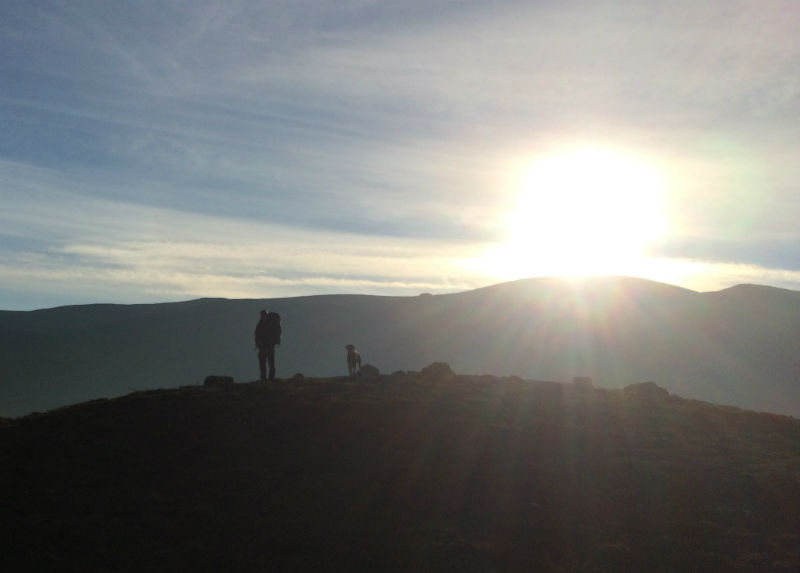 Set up camp late in the day and move on early the next morning. Before hauling out the tent, check for any houses in the area and ask the residents if you want to camp nearby. If your chosen spot looks well-used, pass it by and give the ground time to recover.
Set up camp late in the day and move on early the next morning. Before hauling out the tent, check for any houses in the area and ask the residents if you want to camp nearby. If your chosen spot looks well-used, pass it by and give the ground time to recover.
What do I need to do in advance?
Wild camping is about spending the night in a remote spot, far from civilisation. By definition, this generally means leaving the car behind and hitting the trail, either on foot, bike or maybe even by canoe or kayak.
Pack everything you need in a rucksack, research a route in advance and plot it out on a map. When you’re out in the hills, mobile phone apps are all very well, but when you get out into the wilderness the chances are you will lose signal or your battery will run out, so a traditional paper map and compass (and the ability to use them) are essential.
It’s also vitally important to let someone know where you are planning to go – even if it’s just a rough location.
Where should I camp?
After a few hours of tiring yourself out ploughing through the countryside, you need to find somewhere to sleep. This is the important bit. You’re looking for some flat, dry ground in a discreet and sheltered place as far away from the footpath as possible. A water source nearby would be handy and, of course, a wonderful view in the morning would be perfect, but it’s not essential. Focus on all the other factors first.
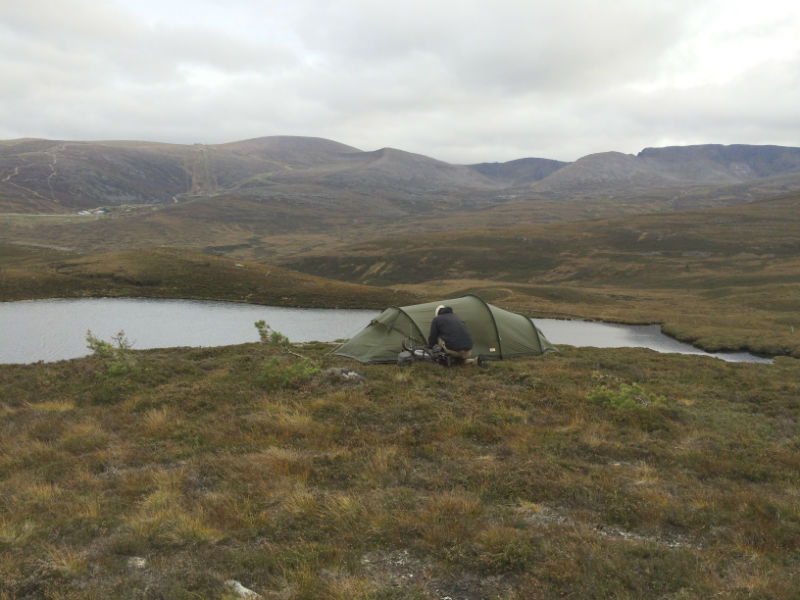 Start looking for a suitable spot about an hour before darkness falls, giving yourself enough time to pitch your tent before it gets too dark. If you find somewhere early on that looks suitable, stop there and then – don’t be tempted to carry on and expect to find another site, because sod’s law means that you won’t and you’ll have to return to the original spot – assuming it’s still free.
Start looking for a suitable spot about an hour before darkness falls, giving yourself enough time to pitch your tent before it gets too dark. If you find somewhere early on that looks suitable, stop there and then – don’t be tempted to carry on and expect to find another site, because sod’s law means that you won’t and you’ll have to return to the original spot – assuming it’s still free.
Leave no trace
Recently, wild campers have suffered some bad press thanks to the inconsiderate behaviour of a few individuals. We’ve all seen the photographs of piles of debris left behind in the countryside – abandoned tents, camping furniture, and sleeping bags, not to mention enough empty beer cans to keep the local recycling plant in business for a year.
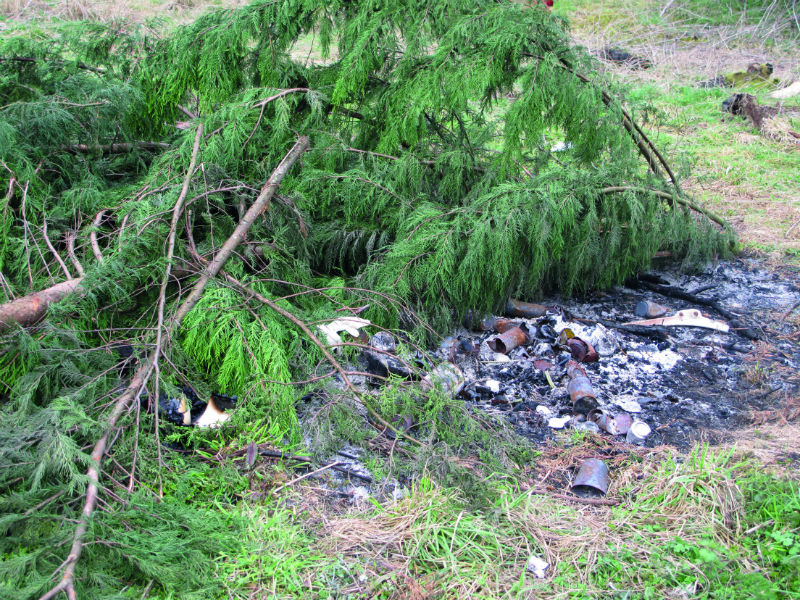
The aim is to have minimum impact on the environment so that when you leave, the area looks exactly as it did when you arrived. Try not to move any branches or rocks and if you do have to, make sure you return them to the site before you leave. After packing up your kit, check the area for any items of gear or litter you might have missed to make sure you don’t leave anything behind.
Can I light a fire?
If you have a stove with you, there should be no need to light a campfire, tempting as it might be. As well as the risk of damaging the ground or starting a larger wildfire, a bright orange glow in the darkness is only going to draw unwanted attention.
But if you do decide to light a fire, make sure it’s done as safely as possible. Pay attention to No Campfire signs and never build it on vegetation; instead scatter some gravel, dirt or sand to create a fire bed. Gather fuel – twigs and branches – from the surrounding area but never cut anything from trees or bushes. Let the fire burn out completely to lessen the impact on the environment.
Burn all the wood until there’s nothing left but ash. Pour water over the remaining fire and mix the ash with the sand/dirt on the fire bed. When that is done and it has cooled down completely, disperse everything around the area.
Is It safe to drink water from a river or lake?
Water is heavy to carry so you will probably want to be camped near a water source. Running water from a river or stream is generally cleaner than still, but either way you should filter or boil any water before drinking.
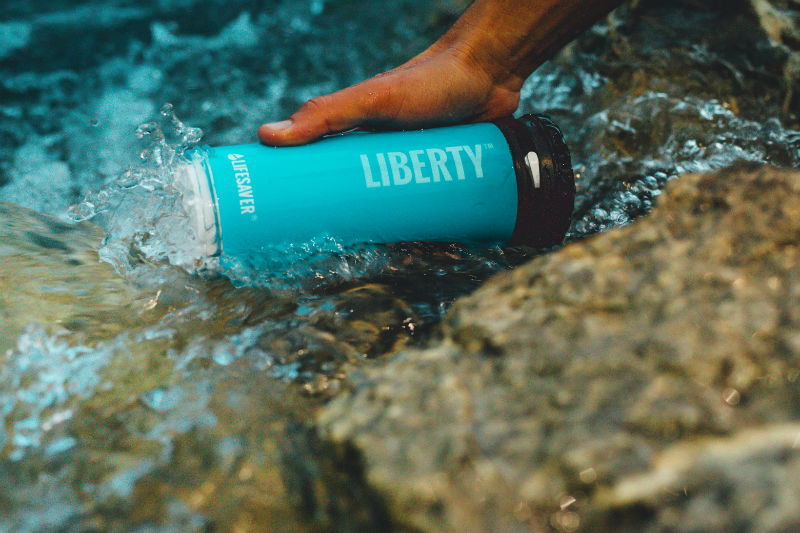 A good example of a filter is the LifeSaver Liberty bottle – as used by the British Army and Oxfam – which has an innovative two-in-one design that means it can be used as either a personal drinking bottle or an in-line filter to pump clean water into other bottles and containers. The bottle’s hand pump forces water through the ultrafiltration membrane and then an extra carbon filter, eliminating the risk from water-borne contaminants such as viruses, cysts and bacteria.
A good example of a filter is the LifeSaver Liberty bottle – as used by the British Army and Oxfam – which has an innovative two-in-one design that means it can be used as either a personal drinking bottle or an in-line filter to pump clean water into other bottles and containers. The bottle’s hand pump forces water through the ultrafiltration membrane and then an extra carbon filter, eliminating the risk from water-borne contaminants such as viruses, cysts and bacteria.
How do I keep clean while wild camping?
For a couple of nights in the wilderness, you should be able to go without showering. But hygiene is still important.
Take an antibacterial handwash with you for using before you eat and a small bottle of washing-up liquid to clean pots, plates and cutlery.
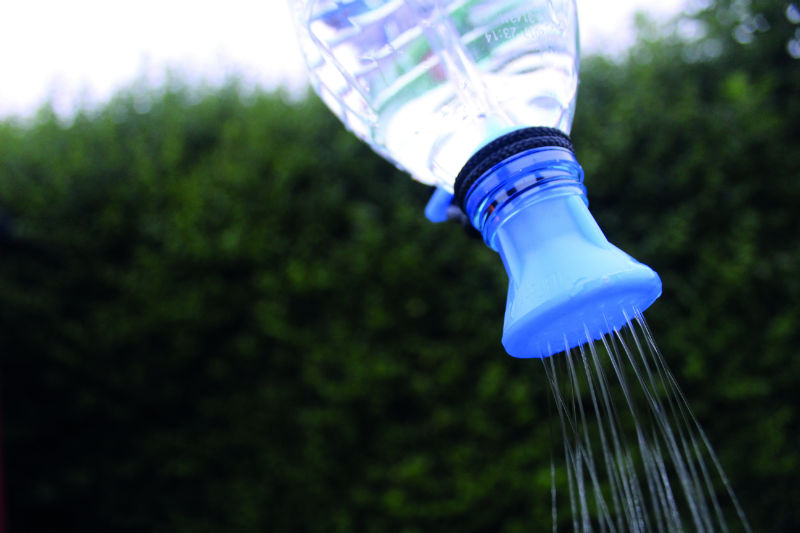
A greener alternative is the Bottleshower, a nice piece of lightweight kit that allows you to convert a plastic drinks bottle into a shower. Or maybe just take a dip in a lake or river!
However you decide to keep clean, make sure you don't use a soap that will pollute the ground or any nearby water courses.
Finished reading?
Want more excellent information and advice about lightweight camping and backpacking?
Our complete guide to wild backpack camping adventures is full of great advice.
Expert Camping advice to your door!

Camping magazine has been the voice of campers for over 60 years!
Camping is the UK's only magazine devoted to the wonderful world of life under canvas and the freedom it brings. Every issue is packed with inspirational travel, the top camping sites to stay on, reviews of the latest tents, camping gear reviews, practical help and much more to help you get the most out of your camping adventures.
Want to know more about Camping Magazine?
About Camping Magazine





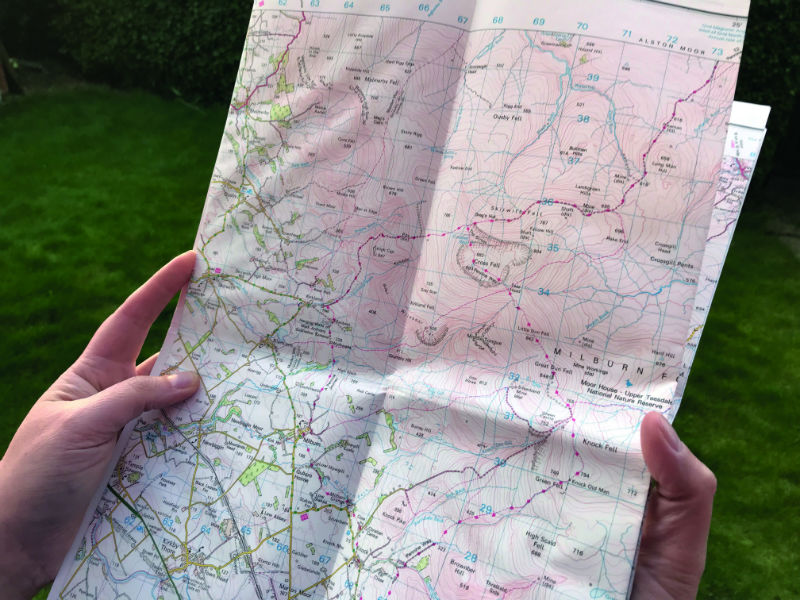


Recent Updates
Camping barbecue: our guide to cooking up a storm this summer
Is there anything more British than sausages grilled on an open flame and dropped on wet grass? Camping and barbecues go hand in hand, which is why ...
Our family camping checklist: everything you need to pack
Sure, you’ve packed the tent and the sleeping bags – but what about slip-on shoes and glow sticks? These are ...
Our guide to planning the perfect camping road trip
Roll down the window, pop on those shades and crank up the volume – it’s time for a road trip. Get ready for ...
Camping in Europe: our 12 top tips
If you’ve not camped in Europe before, there’s a few tips and tricks you’ll need to avoid some continental ...
Solar power for camping: all you need to know
Staying connected in the great outdoors is easier than ever with a solar charger – or is it? How reliable are ...
Wild camping kit list: everything you need for your next adventure
Make sure you’re ready for anything with this list of lightweight camping gear and clothing, including ...
Camping furniture: all you need to know to make your tent a cosy haven
We delve into the essentials of camping chairs, camping tables, and kitchen and bedroom furniture, ensuring ...
Camping lights for tents: What you need to know
We will guide you through all the lighting options available for you and your tent, including interior ...
Camping kitchen: all you need to know
In the great outdoors, a well-equipped camping kitchen transforms mealtime into a delightful adventure ...
How to pack away your camping gear for winter
A complete guide to packing and storing your gear at the end of the season ...
Other Articles
Camping guide to trailers
Trailer stash or trailer trash? Being able to carry lots of other gear when you go camping isn’t such a bad idea, is it? Nick Harding looks at the ...
Winter camping: all you need to know to keep warm
Winter doesn’t have to mean the end of the camping season. With good preparation and the right gear, there’s ...
Camping toilets: a complete guide
If you are wild camping, camping off-grid or the campsite you book onto doesn’t have toilet facilities, you ...
Top tips for camping in windy weather
How to make sure your tent stands up to gusty conditions ...
Camping tents: a complete guide
If you're considering buying a camping tent, whether it's your first time or you're a seasoned camper, making ...
Camping sleeping bags and beds: a complete guide
When it comes to camping, there's one essential item that can make or break your outdoor adventure: the ...
Camping gas: how to use gas on the campsite
A complete guide to using camping gas appliances safely on the campsite, from choosing the right stove to ...
Camping storage: a complete guide
Having problems knowing where to put all your gear when you're camping? Read our top tips and see some great ...
Camping electric hook-up: a complete guide
This is everything you need to know about using electricity on a campsite, including how to hook up ...
How to pack all your camping gear into your car
Planning a family camping holiday? Find out the best way to fit all the kit you need into your car boot, roof ...